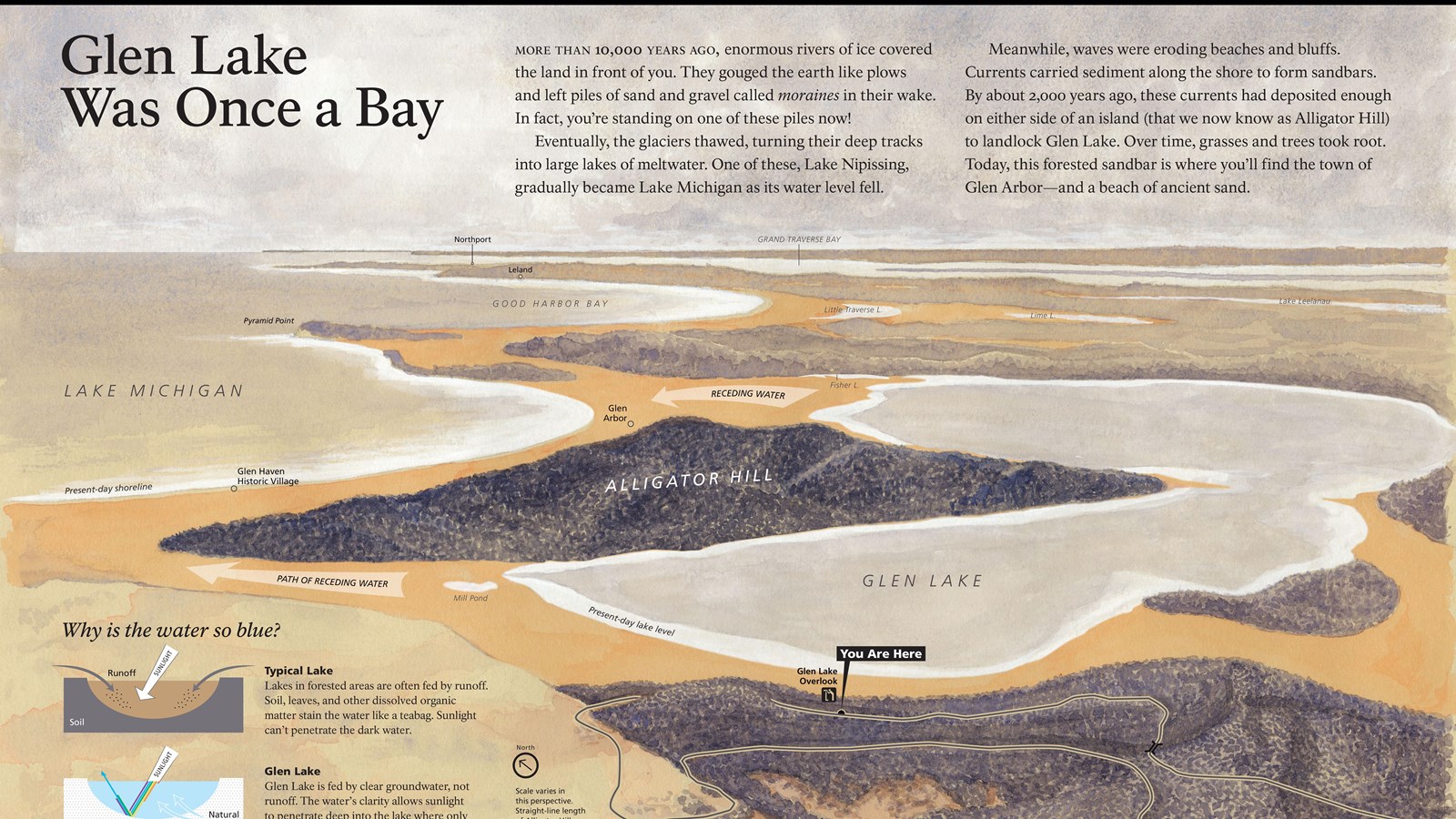Last updated: June 1, 2021
Place
PSSD Wayside-Glen Lake Was Once a Bay

NPS credit
Historical/Interpretive Information/Exhibits
Wayside: Glen Lake Was Once a Bay
More than 10,000 years ago, enormous rivers of ice covered the land in front of you. They gouged the earth like plows and left piles of sand and gravel called moraines in their wake. In fact, you're standing on one of these piles now! Eventually, the glaciers thawed, turning their deep tracks with great lakes of meltwater. One of these, Lake Nipissing, gradually became Lake Michigan as its water levels fell. Meanwhile, waves were eroding beaches and bluffs. Currents carried the debris along the shore to form sandbars. By about 2,000 years ago, these currents had deposited enough sediment on either side of an island (that we now know as Alligator Hill) to landlock Glen Lake. Over time, grasses and trees took root. Today, this forested sandbar is where you'll find the town of Glen Arbor-and a beach of ancient sand.
Why is the water so blue?
Lakes in forested areas are often fed by runoff. This floods the lake with soil, leaves, and other dissolved organic matter that stains the water like a teabag. Sunlight is absorbed by the dark water and little light is reflected.
Unlike most lakes, Glen Lake is fed by clear groundwater, not runoff. The water's clarity allows sunlight to reflect off the white, sandy bottom much like you would see in a swimming pool.
